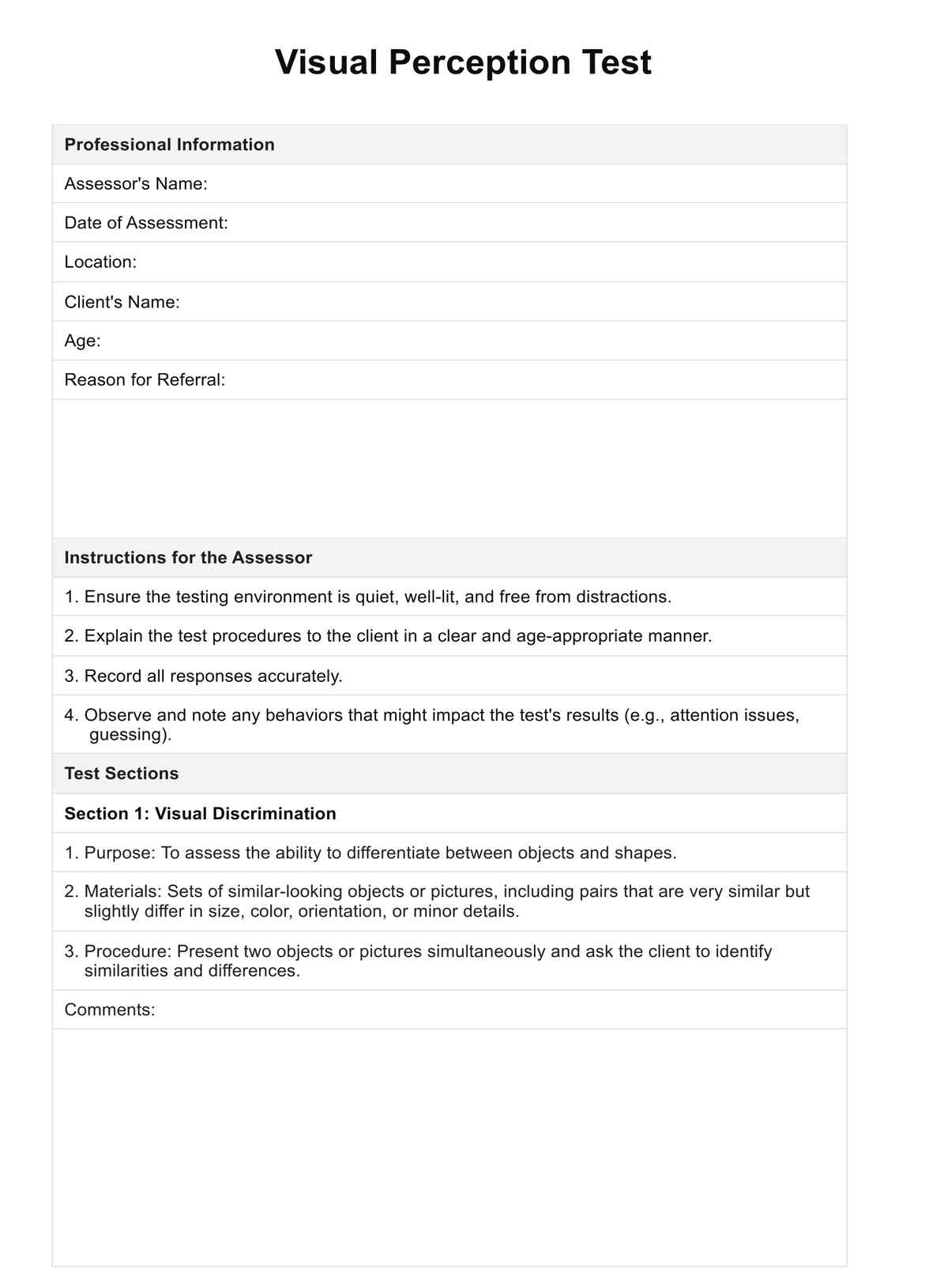A Visual Perception Test assesses an individual's ability to process and interpret visual information. This includes evaluating skills such as visual discrimination, visual memory, spatial relationships, and other critical visual perceptual abilities.
The test helps identify strengths and weaknesses in these areas, which can be crucial for diagnosing learning disabilities, brain injuries, and other visual processing conditions.












